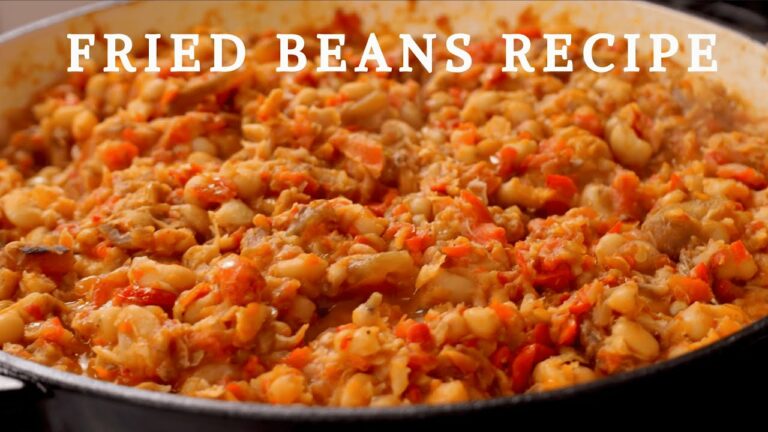
Cooking Nigerian moi moi, a beloved steamed bean pudding, has been a culinary art passed down for generations. Traditionally made using labor-intensive techniques, this dish is a staple in many Nigerian households. However, modern hacks and shortcuts have emerged, offering quicker and more convenient ways to prepare it. This article explores the traditional methods of cooking moi moi compared to the modern hacks, weighing their benefits and differences.
What Is Moi Moi?
Moi moi is a popular Nigerian dish made primarily from blended beans, peppers, onions, and a variety of spices. Often served as a side dish or enjoyed on its own, it is a protein-rich, steamed delight commonly paired with rice, garri, or even bread. The dish is known for its unique flavor and soft, pudding-like texture. Traditionally, making moi moi requires a good amount of effort, from peeling the beans to wrapping the mixture in leaves for steaming. With the advent of modern kitchen appliances and shortcuts, there are now easier ways to prepare this delicacy.
Traditional Methods of Preparing Moi Moi
Making moi moi using traditional methods involves a step-by-step process that many Nigerian households still follow. Although time-consuming, the traditional method is often celebrated for preserving the dish’s authentic flavors and textures.
Peeling the Beans by Hand
In traditional moi moi preparation, raw black-eyed peas or Nigerian brown beans are soaked in water for several hours. After soaking, the skins are peeled off by rubbing the beans between the palms until the white beans are exposed. This manual process is labor-intensive but ensures a smoother moi moi texture.
Using Banana or Uma Leaves for Wrapping
Once the bean paste is blended with peppers, onions, oil, and spices, it is traditionally wrapped in banana or uma leaves. The leaves infuse a unique aroma into the moi moi during steaming, enhancing its flavor. The wrapping also gives the dish its characteristic cylindrical shape, making it visually appealing.
Steaming over Firewood
Traditionally, moi moi is steamed over firewood in large pots. This method imparts a smoky flavor that many consider an essential element of the dish’s authenticity. The cooking process can take up to an hour or more, depending on the portion size and heat intensity.
Modern Hacks for Cooking Moi Moi
As life becomes busier, many have turned to modern hacks for cooking Nigerian moi moi. These hacks aim to reduce preparation time and effort without sacrificing taste. Here are some popular modern techniques for making moi moi in today’s kitchens:
Using a Blender for Peeling
One of the most time-saving modern hacks is using a blender to peel the beans. Instead of peeling by hand, the beans are soaked for a short time and then pulsed in a blender with water. This method loosens the skins, making it easier to rinse them off without the manual labor of traditional peeling.
Cooking Moi Moi in Foil or Plastic Containers
Instead of wrapping the bean paste in leaves, many opt to use aluminum foil, plastic bowls, or heat-resistant containers. While these materials lack the flavor infusion of banana leaves, they significantly reduce preparation time. Foil and containers are widely available, making them a convenient alternative for busy individuals.
Using an Electric Steamer or Oven
Modern kitchens often come equipped with electric steamers or ovens, both of which can be used to prepare moi moi. The electric steamer provides a consistent heat source, cutting down on the need for close supervision. Alternatively, some people bake moi moi in the oven using a water bath to replicate the steaming process. This method saves time and is ideal for those cooking large quantities.
Traditional Methods vs. Modern Hacks: Which Is Better?
Both traditional methods and modern hacks for cooking Nigerian moi moi have their advantages, and the choice often comes down to personal preference. Here’s a comparison to help you decide:
- Flavor: Traditional methods, especially when using banana leaves and firewood, impart a rich, smoky flavor. Modern hacks, while convenient, may not deliver the same depth of flavor.
- Time: Modern hacks significantly cut down preparation and cooking time. The blender, foil, and electric steamers make moi moi more accessible to those with busy schedules.
- Convenience: For large gatherings, traditional methods can be more labor-intensive but offer a more authentic experience. Modern hacks, on the other hand, provide ease of use for everyday meals.
- Texture: While traditional peeling methods ensure a smoother texture, using a blender for peeling can result in slight variations. Some people may prefer the slightly coarser texture produced by modern techniques.
A Balanced Approach to Cooking Moi Moi
For those seeking a balance between tradition and modernity, combining both methods can yield great results. For instance, you can use a blender for peeling the beans and an electric steamer for cooking, while still opting to wrap the bean paste in banana leaves for added flavor. This hybrid approach retains the authenticity of the dish while making the process more convenient for today’s fast-paced lifestyles.
A Timeless Nigerian Dish, Evolving with Time
Cooking Nigerian moi moi has evolved from a purely traditional process to one that embraces modern conveniences. While the traditional methods offer unparalleled flavor and nostalgia, modern hacks make this cherished dish more accessible to everyone, regardless of their busy schedules. Whether you choose to go old-school or embrace the new techniques, one thing remains certain—moi moi will always be a delicious and integral part of Nigerian cuisine.
Discover more from Amebo Media
Subscribe now to keep reading and get access to the full archive.




